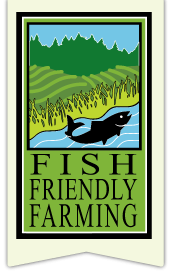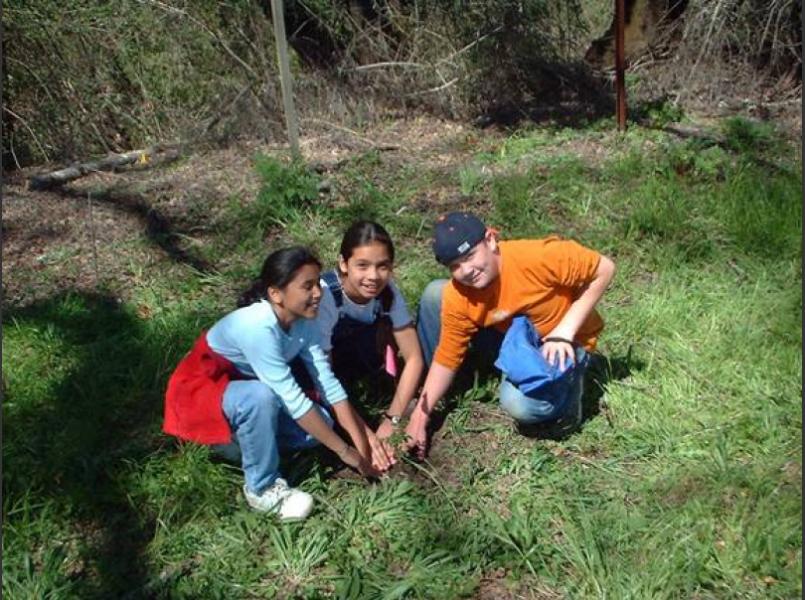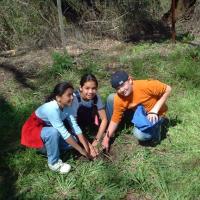Maacama Creek Invasive Plant Removal and Native Plant Revegetation Project
Maacama Creek flows from the northwestern slopes of Mt. St. Helena through Knight's Valley and into the Russian River. Maacama Creek on the Simi Vineyard property is one of the richest riparian zones in the Russian River watershed. Varying between 250-350 feet in width, the Maacama Creek riparian corridor has a diverse assemblage of plants, small seedling willow and cottonwood, as well as 60-foot tall mature cottonwoods intermixed with mature Oregon ash, box elder, white alder, California buckeye and big-leaf maple. Live and valley oak and California bay laurel grow on the outer edges of the creek corridor. On the forest floor are native snowberry, elk clover, spicebush, and California wild rose as well as a dense infestation of invasive non-native blue periwinkle and Himalayan blackberry. These invasive species can cover over the riparian forest floor, eliminating native plants and native tree seedlings. The invasive plants were distributed in patches throughout the corridor. Since 1999, Simi Vineyard, as part of the Fish Friendly Farming program, has carried out a control program for blue periwinkle and Himalayan blackberry.
Grapegrowers have concerns about these invasive plants both for their effects on the riparian ecosystem and as hosts for the blue-green sharpshooter, a vector for the Pierce’s Disease bacterium. Pierce's Disease is deadly to wine grapevines. Control and removal of host plants is the best way to control Pierce's Disease and reduce the loss of grapevines. As part of the removal of invasive non-native plants, Simi Vineyards in conjunction with the Fish Friendly Farming program and Circuit Rider Productions replanted native snowberry, California wild rose, spicebush and a variety of trees.
Simi Vineyards has allowed a significant level of environmental monitoring and community education on their property on Maacama Creek, and has performed extensive restoration and revegetation work.



